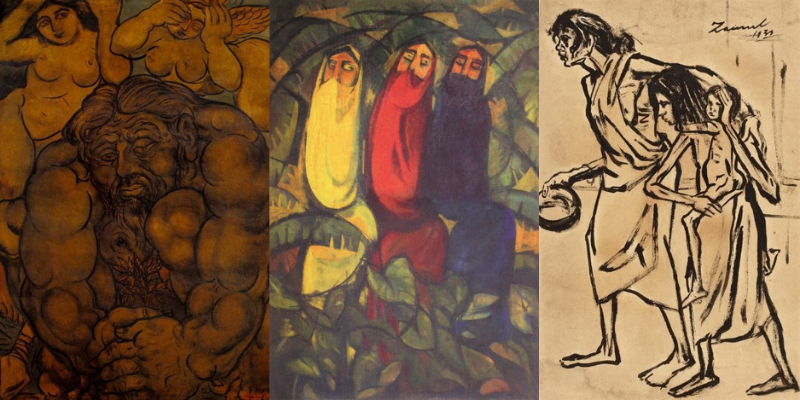Introduction
Bangladesh’s rise as an independent nation has had a tremendous impact on the country’s art, which reflects the region’s social and political transformations. The nation is divided into two parts: Bangladesh and West Bengal, and the majority religion is Islam. Identity politics developed through the selection and invention of tradition, have played an important part in the development of concepts of identity in this region. Globalization has influenced a transnational public sphere in the postmodern state, altering the concept of nativity and rethinking the politics of identity, solidarity, and cultural diversity. This re-conceptualization of space has an impact on Bangladeshi art, making identity resolution a greater challenge. As national issues are addressed on a global scale, the previous practice of using conventional signifiers no longer resonates.
As the global art world has grown more accessible, artists have to investigate the language and issues dominating the global art scene, as well as the readability of artwork. International political, economic, environmental, and social problems bind the globalized globe together and appear in the work of Bangladeshi artists. Traditions are used as markers of identification rather than as politically charged symbols, and they are delicately inflected for the global art world, which supports plurality and difference. Identity and nationalism are contentious themes in Bangladesh’s colonial and postcolonial societies. With their distinct viewpoints, creative techniques, and thought-provoking subject matter, contemporary Bangladeshi artists have made major contributions across the globe. These artists address local and global challenges while drawing inspiration from their cultural past, establishing Bangladesh’s position in the field of contemporary art. This article examines the achievements of these prominent Bangladeshi artists who have helped to redefine art on a global scale.
Political Struggle and its Impact on the Art Practices in Bangladesh
The Indian subcontinent’s independence from British control in 1947 resulted in the separation of India and Pakistan based on the Two Nation Theory. With the establishment of Pakistan as a distinct homeland for Muslims, the battle for political and cultural rights began. Muslim educators from the Calcutta Art School, Zainul Abedin and Safiuddin Ahmed, relocated to East Pakistan, fostering educational and cultural development. Quamrul Hassan, a Calcutta Art School student, relocated to Dhaka in 1948, leading to the establishment of an art institute in Dhaka. The Language Movement began in East Pakistan, bringing to the fore Bengali people’s language and cultural heritage. This brought about the awareness that religion could not replace culture, as well as the concept of a nation-state. The Language Movement developed into a cause for autonomy and liberty, and artists became loud critics of Pakistani authorities’ abuses. The East Pakistani art movement, which concentrated on the environment and society of their region, was led by artists like Zainul Abedin, Safiuddin Ahmed, Quamrul Hassan, and S.M. Sultan. They employed modernist discourse to encourage people to consider cultural traditions and the need to reconstruct cultural identity with each change in circumstances.
Modernism Movement and Its Impact
The contemporary art movement in Bangladesh began in 1948, with the foundation of the Dacca Art School, set up by Shilpacharya Zainul Abedin. Founded in Dhaka following the subcontinent’s split in 1947, the institution has been shaped by artists such as Khaja Shafique Ahmed, Quamrul Hassan, Shafiqul Amin, Habibur Rahman, Habibullah Bahar, Safiuddin Ahmed, Anwarul Haq, and Syed Ali Ahsan. The pioneers of contemporary art in former East Pakistan maintained linkages to undivided India and continuity with it through the volatility of shifting concepts of new national and cultural identities, especially after the Language Movement. However, a divide emerged with the group of painters who were early students of Dhaka’s art institute, many of them went on to study in Europe and the United States. They wished to be a part of the worldwide modern art scene, which had been restricted to them due to their training at the Dhaka Art Institute, which followed the methods of the Calcutta Art School. In the second part of the 1950s, the majority of them returned to East Pakistan and absorbed Cubism, Abstract Expressionism, Surrealism, and other forms of modern Western art.
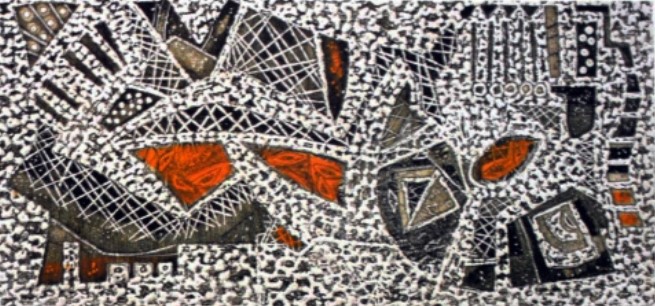 Safiuddin Ahmed, Sound of Water, aquatint, soft ground, mezzotint and deep etch, 1985, https://journals.openedition.org/
Safiuddin Ahmed, Sound of Water, aquatint, soft ground, mezzotint and deep etch, 1985, https://journals.openedition.org/
Many artists, like Mohammad Kibria (1929-2011), Aminul Islam (1931-2011), Abdur Razzaque (1932-2005), Debdas Chakraborty (1933-2008), Abdul Baset (1935-2002), and others, embraced pure abstraction. Hamidur Rahman (1928-1988) and Murtaja Baseer (1932) traversed the abstract and representational, while Rashid Choudhury (1932-1986), Qayyum Chowdhury (b. 1934), and Novera Ahmed (b. around 1930) attempted to formalize the union of modernism and traditional art. Abstract compositions became synonymous with contemporary art for many people. The quick spread of Western art movements was a result of colonial schooling, which created a “feeling of inferiority” in the colonized nation, which embraced anything the colonizer supplied as the finest. Its fault was that it prioritized the end result over its socioeconomic context while utterly ignoring its philosophical roots, limiting the movement to an exterior practice of a new form. In Bangladesh, the argument on modernism/abstraction is continuing, with the ‘public’ and its distance from the art entering the conflict. Some artists of the younger generation regard modernism’s ‘universal’ language as an imported term, irrelevant to the context because Bangladesh is not economically’ modern’.
Many of the intellectuals and young of the 1950s were drawn to progressive, secular politics, and prominent artists were involved in socio-political activities. As a result, many of these artists’ first-stage productions demonstrated political dedication, opposition to social imbalance and injustice, and sympathy for the impoverished. Many artists from this era went on to become important figures in the art world, and the 1950s witnessed the birth of art criticism, a sympathetic media, the expansion of an art-watching audience, and the development of artist professionalism. This second generation of artists was notable because they introduced fresh interpretations of modernism, which revolutionized the art world and its ideals.
Influential artists of the East Pakistani Art Movement
Zainul Abedin, Quamrul Hassan, Safiuddin Ahmed, SM Sultan, and Mohammad Kibria were among the students at the Dhaka Art School, which is now part of the University of Dhaka’s Faculty of Fine Arts. They all made significant contributions to the development of the contemporary art movement in Bangladesh. Their artistic articulations generated distinct languages, and their ways of expression ranged from folk to figurative, semi-figurative, semi-abstract, pure abstract, abstract expressionism, and more.
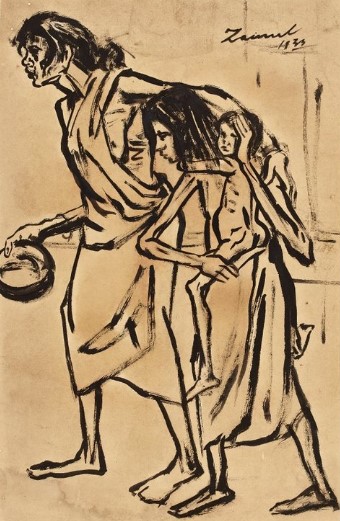 Sketch by Zainul Abedin, https://aura-asia-art-project.com/
Sketch by Zainul Abedin, https://aura-asia-art-project.com/
Zainul Abedin, a well-known artist in East Pakistan, was noted for his dedication to building an art-friendly environment. His art was a fusion of many techniques, such as watercolour and brush-over oil paint on canvas. The representation of rural Bengal in the paintings of Mukul Dey and Ramendranath, which had lost the excitement of critics in the 1930s and 1940s, affected Abedin’s work. Abedin studied at the Slade School of Fine Art in the United Kingdom and visited museums and galleries around Europe in 1951.
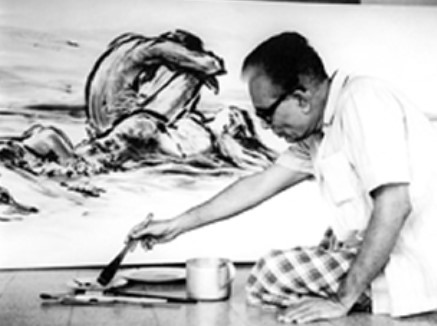 Zainul Abedin at work, Image Courtesy: Amanul Huq, https://aura-asia-art-project.com/
Zainul Abedin at work, Image Courtesy: Amanul Huq, https://aura-asia-art-project.com/
When he returned in 1952, he looked to ‘folk art’ for inspiration, focusing on the simplicity of shapes, basic colours, and decorative lines seen in folk art. Modern art is believed to have originated in Bangladesh with Zainul Abedin, who spent his early years in Mymensingh and was inspired by the lush foliage, riverine splendour of the Brahmaputra, and its rural environs. His painting reflected the Bengali way of life perfectly, showing many emotions of pleasure, hilarity, joy, adoration, agony, liveliness, conscience, and courage. His drawings, drawn in Chinese ink and brushed on inexpensive packing paper, reflected the hardships of the masses.
After his early representational phase, Safiuddin Ahmed adopted minimized abstract formal language that was modified by the Language Movement. His work was distinguished by its emphasis on rural vistas, pastoral life, landscapes, floods, and Santal life, as well as topics such as the Liberation War and the Language Movement. Ahmed graduated from the Government School of Art in 1942, where he mastered rigorous printing methods such as wood engraving, etching, and dry point. His undergraduate years were the most formative in his creative development since he encountered great artists in West Bengal.
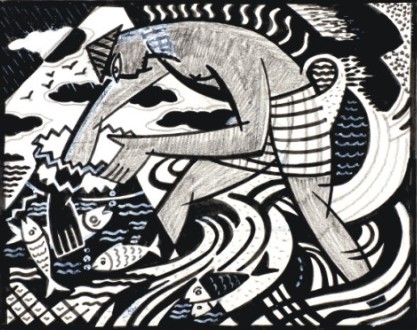 Fishing, Safiuddin Ahmed, Brush and Ink, 1950, https://aura-asia-art-project.com/
Fishing, Safiuddin Ahmed, Brush and Ink, 1950, https://aura-asia-art-project.com/
S.M. Sultan was a well-known artist who specialized in depicting rural life, notably that of fishermen, peasants, and labourers in his works. His paintings depicted the working class’s hardships and togetherness, particularly in underprivileged neighbourhoods. His muscular and robust figures symbolized wealth, which was his goal for rural Bengal. His early works were influenced by the European Renaissance culture, but the figures of women in his works were traditional Indian.
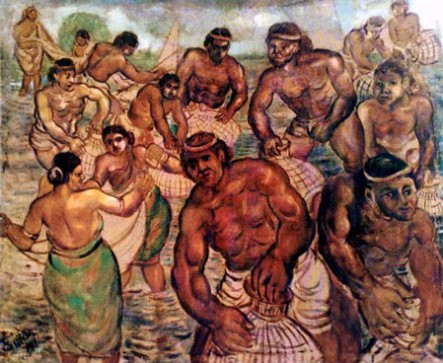 SM Sultan, https://aura-asia-art-project.com/
SM Sultan, https://aura-asia-art-project.com/
Mohammad Kibria was a well-known personality in Bangladeshi art, best known for his modern paintings that combined compositions, colours, and forms. His style is distinct, personalized, and expressive, with an emphasis on arrangements and techniques. He worked with a variety of materials and methods, including delicate, lengthy printing. Using minimalism, his etchings and lithographs explored emotions, yearnings, introspection, and liberty.
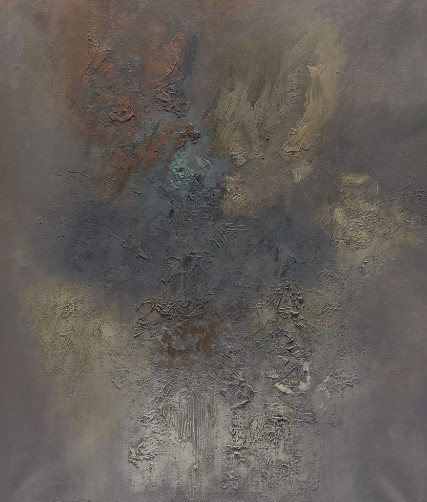 Mohammad Kibria, https://aura-asia-art-project.com/
Mohammad Kibria, https://aura-asia-art-project.com/
The Dhaka Art School was founded in 1948 by a group of dedicated students, largely from left-wing political groups, who represented nature, urban life, and the surrounding environment, with a concentration on sketching and political upheaval. Aminul Islam, Murtaja Baseer, Qayyum Chowdhury, Abdur Razzaque, Debdas Chakraborty, Rashid Chowdhury, Mobinul Azim, Nurul Islam, and Syed Jahangir are among the notable pupils. These painters were called experimental painters because they focused on space, form, and composition. The present-day achievements of Bangladeshi art are linked to the 1960s liberalization, yet each generation of artists has its own specialization.
In the early 1960s, Aminul Islam was a non-figurative painter who experimented with numerous materials and creative styles. He dabbled with several techniques, most notably in his paintings and sketches. Murtaja Baseer was a politically and socially concerned painter who was influenced by Byzantine and Early Renaissance works. He was praised for his representation of Bengali women, including their anguish, inner torment, splendour, and originality. Baseer’s working approach progressively evolved towards abstract realism. Qayyum Chowdhury was well-known for his book cover designs that dug deeply into folk, pastoral life, and traditions. His clear and intimate manner distinguished his realistic and semi-realistic paintings of the Bangladeshi countryside. Abdur Razzaque evolved into an abstract expressionist painter, focusing on form and colour with nature as a recurring leitmotif. Debdas Chakraborty was also involved in painting, printmaking, and sketching, producing form and color-oriented artwork in vibrant and subdued hues. Rashid Chowdhury was the country’s pioneer in tapestry, fusing heritage with modern Western art. Nurul Islam was well-known for his depictions of curvy ladies, distinctive contour lines, relaxing smoothness, and cubism shapes. Mutunul Azim’s lines represent a contemporary manner of expression, with diverse structures, ovals, and encircling shapes. Syed Jahangir not only captured gorgeous Bangladesh, but also social and environmental challenges such as river erosion, hard workers, and the terrible miseries of peasants and fishermen.
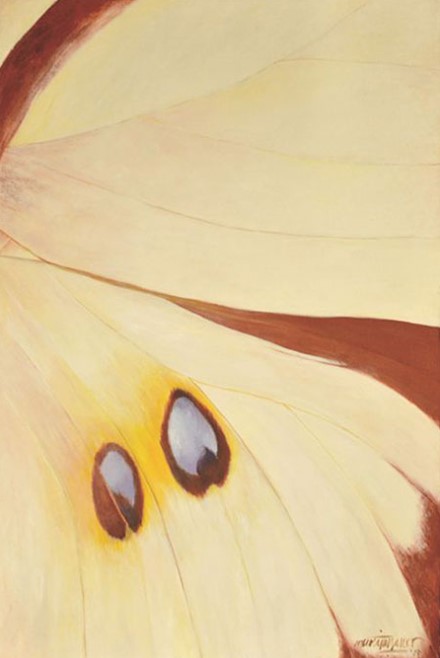 Murtaja Baseer, https://aura-asia-art-project.com/
Murtaja Baseer, https://aura-asia-art-project.com/
Artistic Practices in Bangladesh Post-Liberation War
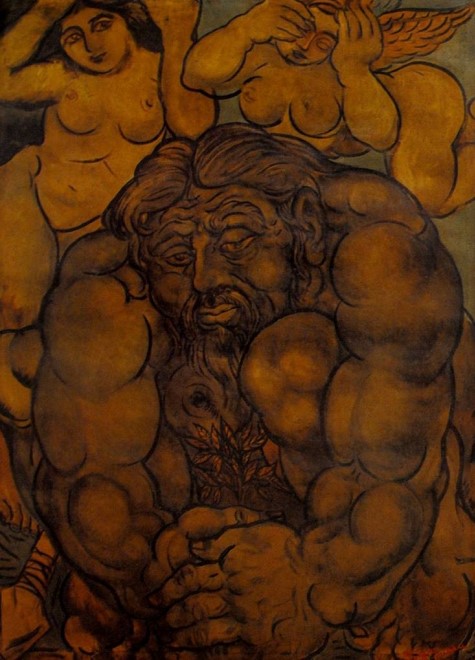 Figure 5: S. M. Sultan, First Plantation, oil on canvas, 1975, https://journals.openedition.org/
Figure 5: S. M. Sultan, First Plantation, oil on canvas, 1975, https://journals.openedition.org/
Bangladesh was founded in the 1950s with the intention of creating a secular, democratic, and socialist republic in which Bengali culture could thrive. State sponsorship of the arts was introduced through the Bangladesh Shilpakala Academy, and art education facilities were built in Chittagong, Rajshahi, and Khulna. Artists were able to travel and participate in international shows, establishing contacts with Western art capitals, India, Japan, and China. The Liberation War provided an appropriate topic for painters and infused figurative depiction with new vitality. During the dictatorial administration of the Pakistan army beginning in the late 1950s, visual arts were usually non-figurative. The conflict reignited the quest for inspiration in Bengali cultural history, as well as a fresh desire to engage with the people and include social and political commentary in their work. In their work, S. M. Sultan and Shahabuddin Ahmed tackled the issue of contextualizing Bangladesh.
Tayeba Begum Lipi, a Bangladeshi artist noted for her daring installations and sculptures, has questioned gender stereotypes. Ayesha Sultana’s minimalist and conceptual works have been acclaimed for exploring the interface of art and architecture. Naeem Mohaiemen is a filmmaker and visual artist who has worked with topics such as migration, diaspora, and political history. Mahbubur Rahman, a Bangladeshi artist recognized for his unorthodox use of materials, is well-known for his thought-provoking work.
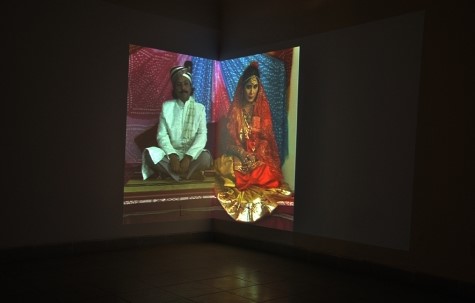 Tayeba Begum Lipi, I Wed Myself, video art, double channel projection, 2010,https://journals.openedition.org/
Tayeba Begum Lipi, I Wed Myself, video art, double channel projection, 2010,https://journals.openedition.org/
The Establishment of the Art Market in Bangladesh
Since the 1990s, Dhaka has had an active art market and galleries, as well as a network of curators, critics, collectors, and artists. As the free market economy gained traction, the state-run Shilpakala Academy lost its ground. Private entrepreneurs, industry owners, and international corporations have taken control of the local art world, which has become a smaller imitation of the global one. Art and culture function as tools of power and control, allowing powerful access and protection. In the framework of predatory capitalism, these patrons rely on government and political party patronage to maintain social and political approval, hence securing artists’ homage. Their patronage also manipulates the global art scene, wielding influence as patrons of organizations and those who control them.
Conclusion
With their inventive and diverse techniques, contemporary Bangladeshi artists are bridging cultural divides and questioning traditional beliefs. Their works address both regional and universal issues, demonstrating the capacity of art to dissolve borders and spark relevant debates globally. Bangladesh’s place in the global artistic landscape develops as the popularity of its artists grows.
References
Online Articles:
Hossain Takir, “Six decades of contemporary art in Bangladesh / Chapter 1 of all 6 chapters”, Aura Asia Art Project
Journal Article:
Selim Lala Rukh, “Art of Bangladesh: the Changing Role of Tradition, Search for Identity and Globalization”, September 2014, Open Edition Journal
Read Also:
South Asian Art Festivals : A Comparative Study of Dhaka Art Summit and India Art Fair.
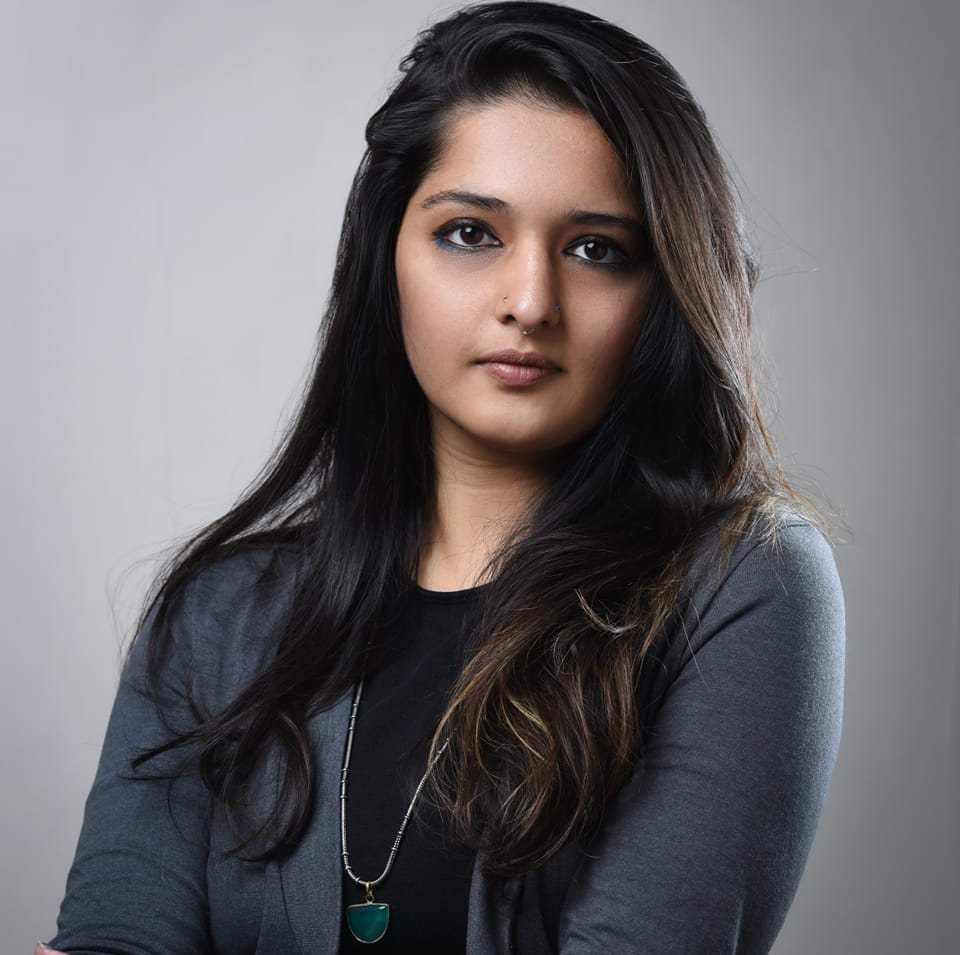
Contributor

